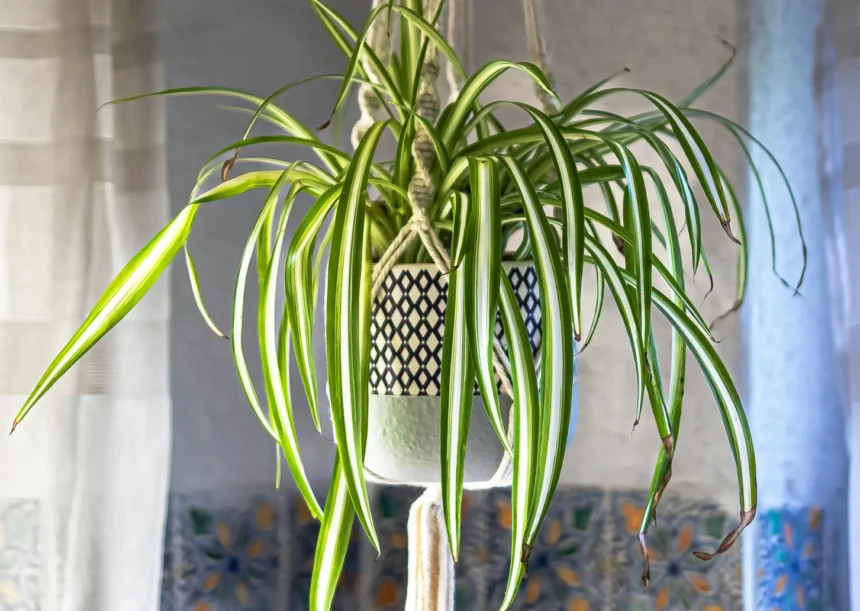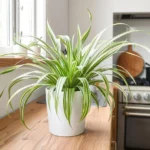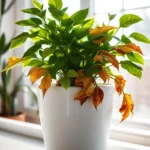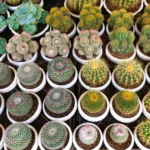Spider plant sunlight needs are essential to understand important for growth . There are only a few indoor plants as flexible, sturdy, and look appealing as a spider plant. Understanding these spider plant sunlight needs is very important, whether one is a seasoned indoor gardener or somebody who is just starting to dabble into houseplants. In this comprehensive guide, we go over everything you should know about giving your spider plant the right amount of light to keep it healthy, thriving, and beautiful indoors.
What Are the Light Requirements of a Spider Plant?
Spider plants are perennial herbaceous they tolerate different light requirements. What makes the spider plant so popular is that it can grow in really any environment. Yet, to get the most from them it is crucial to know their Sun preferences.
1. Spider Plants Thrive in Bright, Indirect Light
Optimal light conditions for spider plants are bright, indirect sunlight. Instead, put your spider plant in a location where it will get lots of light but not direct sunlight, as this could be much to strong for the thin leaves. Ready the pot and plant in porous soil, place it near a south or east-facing window where filtered sunlight could bathe your grow minus risking sunburn.
2. Can Spider Plants Survive in Low Light?
Spider plants can tolerate low light, but they will not do as well in relatively dark areas compared to brighter locations. They may suffer slower growth and their leaves can lose some of the green color and become pale or even yellowish in dim light. This adaptability makes spider plants great in office spaces or darker areas of your home and they can thrive for months without rotation but it is important to rotate these occasionally so you get all sides growing strong.
3. How Much Direct Sunlight Is Too Much?
While spider plants can handle a little direct sunlight, particularly in the morning or late afternoon, extensive time under direct sunlight is detrimetal. The strong sunlight, especially when it is at its hottest, can burn its leaves and turn them brown at the tip or around the edges. If you begin to notice browning, then that would be a fine time to relocate your spider plant to one that is shadier or filter the light with a thin curtain.
Why Proper Sunlight Matters for Spider Plants
All plants need light to look their best, and spider plant care is no different.making sure your spider plant get the right amount of light allows you to:
- Keep leaves green: Spider plants have luscious, deep-green foliage. Lack of light will have your leaves paling and losing their appeal.
- Encourages even growth: Insufficient light can cause the plant to grow towards one light source, resulting in an imbalanced growth.
- Promote flowering: Flowering is uncommon with indoor spider plants, but give them ample light and occasionally a produce small white blooms.
Best Indoor Locations for Spider Plant Sunlight Needs
Having covered the basic sunlight needs of a spider plant, it is time to tell where you can place these indoors.
1. Near East or South-Facing Windows
East or south-facing windows are best for the lighting need of spider plant as mentioned above. These windows afford bright but indirect sunlight that can ensure the plant does not bear full brunt of midday sun. Or to soften the rays, use a sheer curtain for a more diffused light.
2. Low-Light Areas (But Not Completely Dark)
They will tolerate low light conditions, hence being very suitable for rooms, corners, or other areas quite a distance from the windows. However, their growth is going to be rather slow and their foliage less lush. You can even give it a try for spider plants in a room with artificial fluorescent lighting; it’s ideal for offices or bathrooms without natural light.
3. Shelves and Plant Stands Near Light Sources
Place the spider plant on a plant stand or shelf near the window but not directly in front. This will let it get enough sunlight without the possibility of burning. You should also rotate the plant every few weeks so that all sides grow evenly.
Signs Your Spider Plant Is Not Getting the Right Light
Your best indicator for light requirements will be the health of your spider plant. Indications that your plant is not getting enough Sunlight
1. Browning or Scorched Leaves
One of the most common reasons why spider plants turn brown is that they are getting too much sunlight, especially direct full sun. This is worst if it was located under the scorching afternoon sun. The plant can get something similar to a bad burn.
2. Pale or Yellowing Leaves
Loss of Green Color If your spider plant begins to lose its deep green color, and it instead starts turning pale or yellowish in different parts of the same leaf. Give it some more indirect sunlight or a brighter spot to bring this plant back to its vibrant self!
3. Leggy or Stretched Growth
Leggy Spider Plant: How To Fix A Leggy Looking Spider Plant Typically this occur when a plant growing in direction to the light sources. To solve this, ensure to rotate the plant on a more regular basis or provide it with better light from all angles.
Spider Plant Light Conditions: Day-to-Day Care Tips
First, once you have placed your spider plant in a good position, here are a few easy things you can do to keep it happy:
1. Rotate Your Plant
Rotating your spider plant every couple of weeks helps it to grow in a more even fashion and not become leggy. This is especially important if it’s near a window where one side may get more light than the other.
2. Clean the Leaves
The dust on your spider plant’s leaves will develop over some period, and this eventually cuts down on the amount of sunlight reaching the leaves and, by extension, reduces photosynthesis. Clean the leaves every other week with a damp cloth to keep them healthy and nice.
3. Monitor for Pests
Spider plants have a somewhat higher degree of resistance to pests, but from time to time, you may well notice everything from spider mites to aphids. On the other hand, frequent checking of the leaves for any signs and symptoms of pests, like small webs or discoloration in places, is often helpful at catching problems in time.
Common Questions About Spider Plant Sunlight Needs
Can Spider Plants Grow in Artificial Light?
Yes! Spider plants do well in artificial light and so they are great for interiors where there is no direct sunlight. Fluorescent lights are good too, and incase you need it. led grow lights work well! As long as the plant receives at least 8-12 hours of light each day, similar to being outside in natural sunlight.
How Can I Tell If My Spider Plant Needs More Light?
Discoloration of the leaves, pale color, and slow growth are very good indicators that your spider plant is not getting enough light. Move it closer to a window or supplement with a grow light.
Is Morning Sunlight Okay for Spider Plants?
Of course! Morning sunlight is usually softer and not as strong compared to afternoon sun, so it should be just fine for spider plants. If you have the opportunity, try placing your plant by an east window to enjoy some morning rays.
Conclusion: Mastering the Sunlight Needs of Your Spider Plant
It is important that you provide the sunlight needs of a spider plant to keep it growing healthy and looking beautiful. Keeping a spider plant well-lit, regularly rotating it and checking up on its health will help ensure you have beautiful greenery in your indoor living space. Remember, as versatile as these plants are they still need a specific amount of light or they will not deliver their best.
Find more pro tips in our comprehensive spider plant care guide to keep your houseplants thriving every month of the entire year!
Now Playing
1/1
podcast 6 Key Sunlight Tips for Thriving Spider Plants: A Complete Care Guide

podcast 6 Key Sunlight Tips for Thriving Spider Plants: A Complete Care Guide








